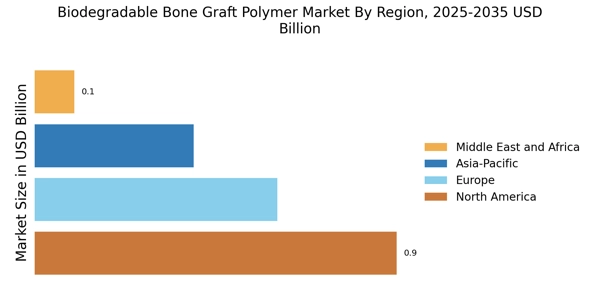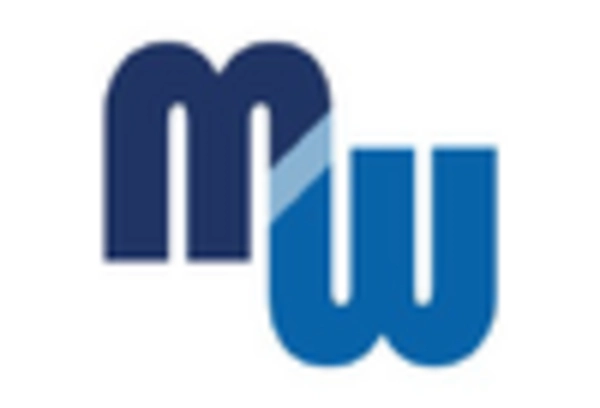Growing Awareness of Environmental Impact
There is a growing awareness of the environmental impact of medical waste, which is influencing the Biodegradable Bone Graft Polymer Market. As healthcare providers and patients alike become more conscious of sustainability, the demand for biodegradable solutions is increasing. This trend is reflected in market data, which shows a rise in the adoption of eco-friendly materials in surgical applications. Biodegradable polymers not only reduce waste but also align with the broader goals of environmental stewardship in healthcare. Consequently, the Biodegradable Bone Graft Polymer Market is likely to see enhanced growth as stakeholders prioritize sustainable practices in medical procedures.
Rising Demand for Biocompatible Materials
The increasing demand for biocompatible materials in the Biodegradable Bone Graft Polymer Market is driven by the need for safer and more effective surgical solutions. As healthcare providers seek alternatives to traditional grafting materials, biocompatible polymers are gaining traction due to their ability to integrate with human tissue. This shift is reflected in market data, which indicates a projected growth rate of approximately 12% annually for biocompatible materials in orthopedic applications. The emphasis on patient safety and reduced risk of rejection further propels the adoption of biodegradable polymers, making them a preferred choice in surgical procedures. Consequently, the Biodegradable Bone Graft Polymer Market is likely to experience substantial growth as healthcare systems prioritize innovative materials that enhance patient outcomes.
Advancements in Manufacturing Technologies
Advancements in manufacturing technologies are playing a pivotal role in shaping the Biodegradable Bone Graft Polymer Market. Innovations such as 3D printing and advanced polymer synthesis techniques are enabling the production of customized bone grafts that meet specific patient needs. These technologies enhance the precision and effectiveness of grafting procedures, which is crucial for successful outcomes. Market data indicates that the integration of these advanced manufacturing processes could lead to a reduction in production costs by up to 20%, making biodegradable options more accessible. As these technologies continue to evolve, the Biodegradable Bone Graft Polymer Market is expected to expand, offering tailored solutions that improve patient care.
Aging Population and Orthopedic Procedures
The aging population is a critical driver for the Biodegradable Bone Graft Polymer Market, as older individuals are more susceptible to bone-related ailments. This demographic shift is leading to an increase in orthopedic procedures, including joint replacements and fracture repairs. Market analysis indicates that the demand for bone grafting materials is projected to rise significantly, with estimates suggesting a growth of around 10% in the coming years. Biodegradable polymers are particularly appealing due to their ability to support natural healing processes while minimizing the need for additional surgeries. As the population ages, the Biodegradable Bone Graft Polymer Market is poised to benefit from the heightened need for effective and safe treatment options.
Increased Investment in Research and Development
Investment in research and development within the Biodegradable Bone Graft Polymer Market is witnessing a notable surge. This trend is largely attributed to the growing recognition of the potential benefits of biodegradable polymers in regenerative medicine. Companies are allocating significant resources to explore novel formulations and applications, which could lead to breakthroughs in bone regeneration techniques. Market data suggests that R&D spending in this sector has increased by over 15% in recent years, reflecting a commitment to innovation. As new products emerge from these research initiatives, the Biodegradable Bone Graft Polymer Market is expected to expand, offering healthcare professionals advanced solutions for complex orthopedic challenges.


















Leave a Comment